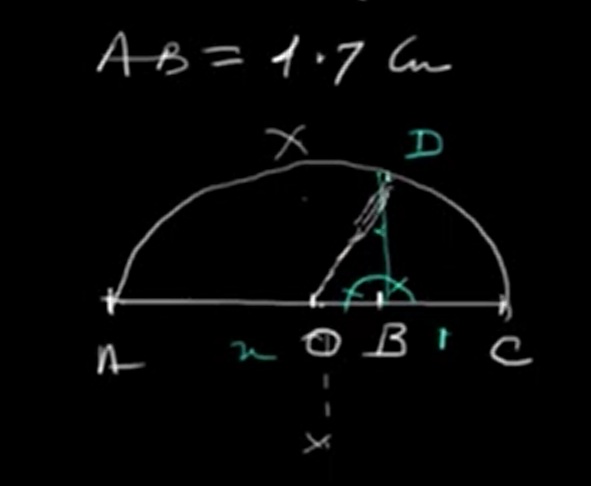The square root of 2 (\( \sqrt{2} \)) is an irrational number, meaning it cannot be exactly represented as a fraction. However, we can geometrically represent it using basic constructions involving a number line, a semicircle, and right triangle geometry.

From the construction:
Triangle ODB is a right triangle, as any angle formed within a semicircle is a right angle, according to the semicircle property.
In triangle ODB:
- OB is the base = distance from O to B = \( OC - BC = 1 - 1 = 0 \) → (Corrected below)
Since point B is located between A and C, with both segments AB and BC measuring 1 unit each, the total distances can be described as:
Assuming point A is at 0, and since B is 1 unit away from A while O is the midpoint of segment AC, the coordinates can be assigned as follows:
Now, in right triangle ADB, by the Pythagorean theorem: \( AD^2 = AB^2 + BD^2 = 1^2 + 1^2 = 2 \) \( \Rightarrow AD = \sqrt{2} \)
This line segment AD represents \( \sqrt{2} \). You can now use a compass to transfer this length from A onto the number line to geometrically mark \( \sqrt{2} \).
The square root of 2 can be constructed using basic geometric tools and the Pythagorean theorem. Such constructions visually demonstrate that irrational numbers like \( \sqrt{2} \) have a precise location on the real number line, even though they cannot be written as exact fractions.